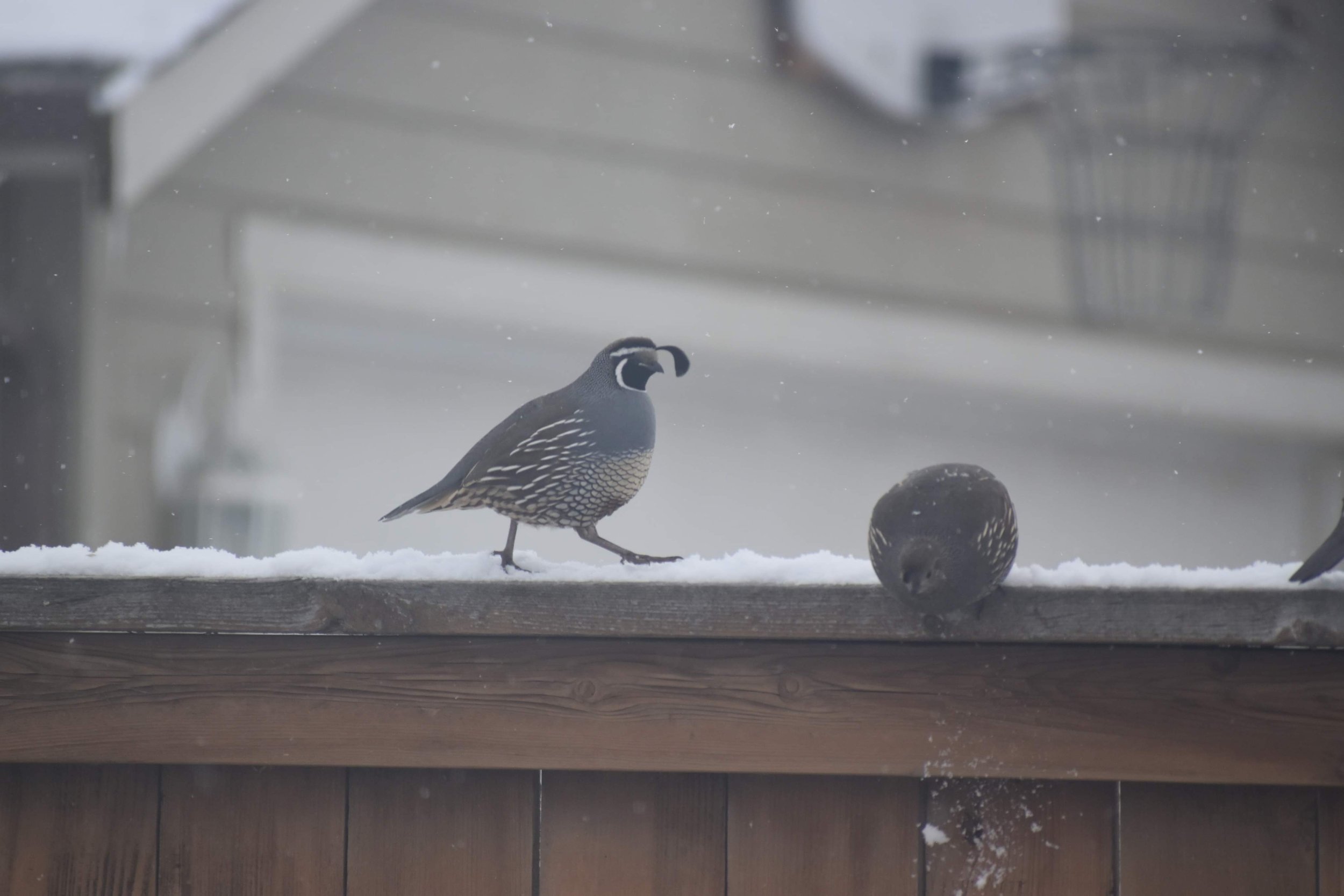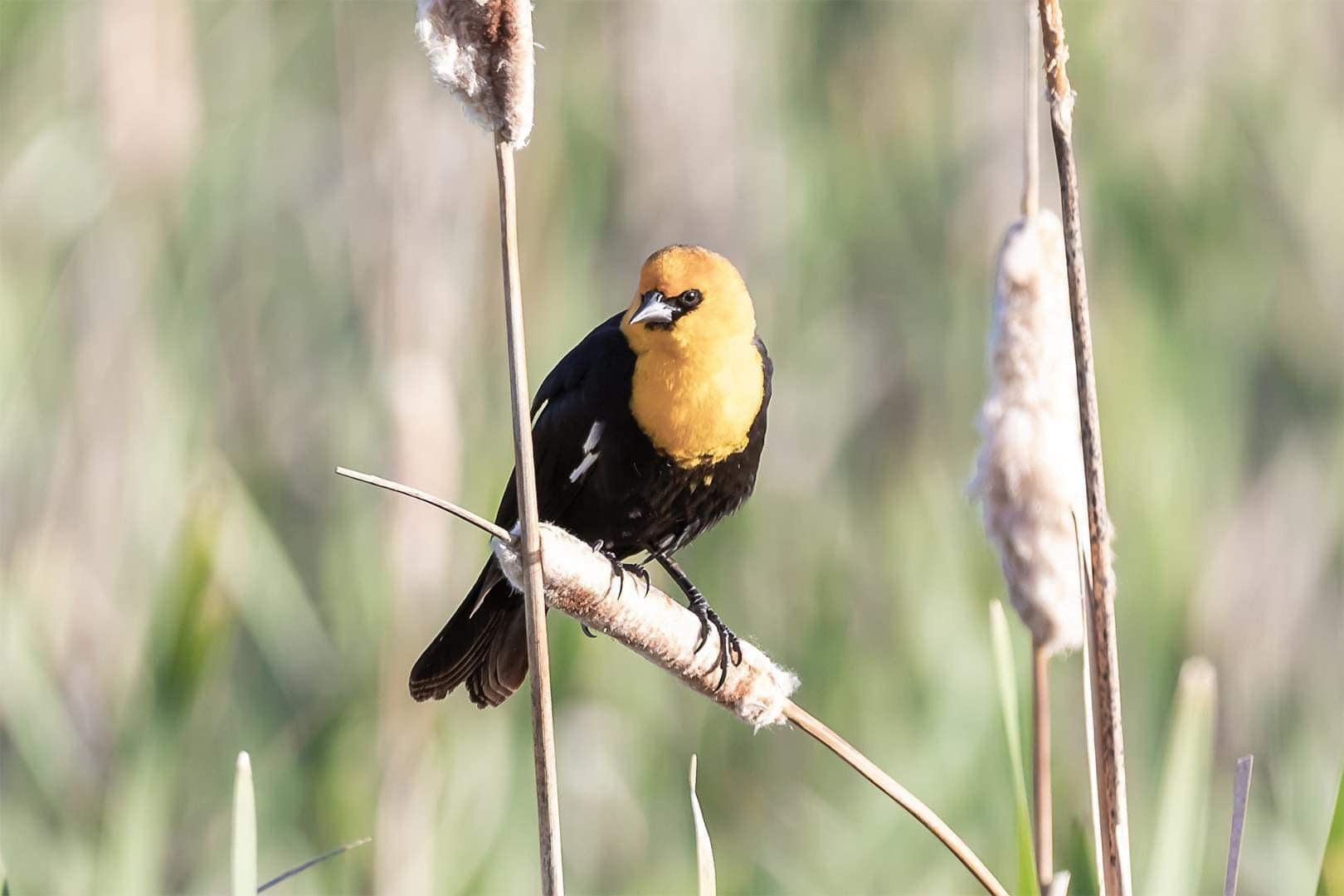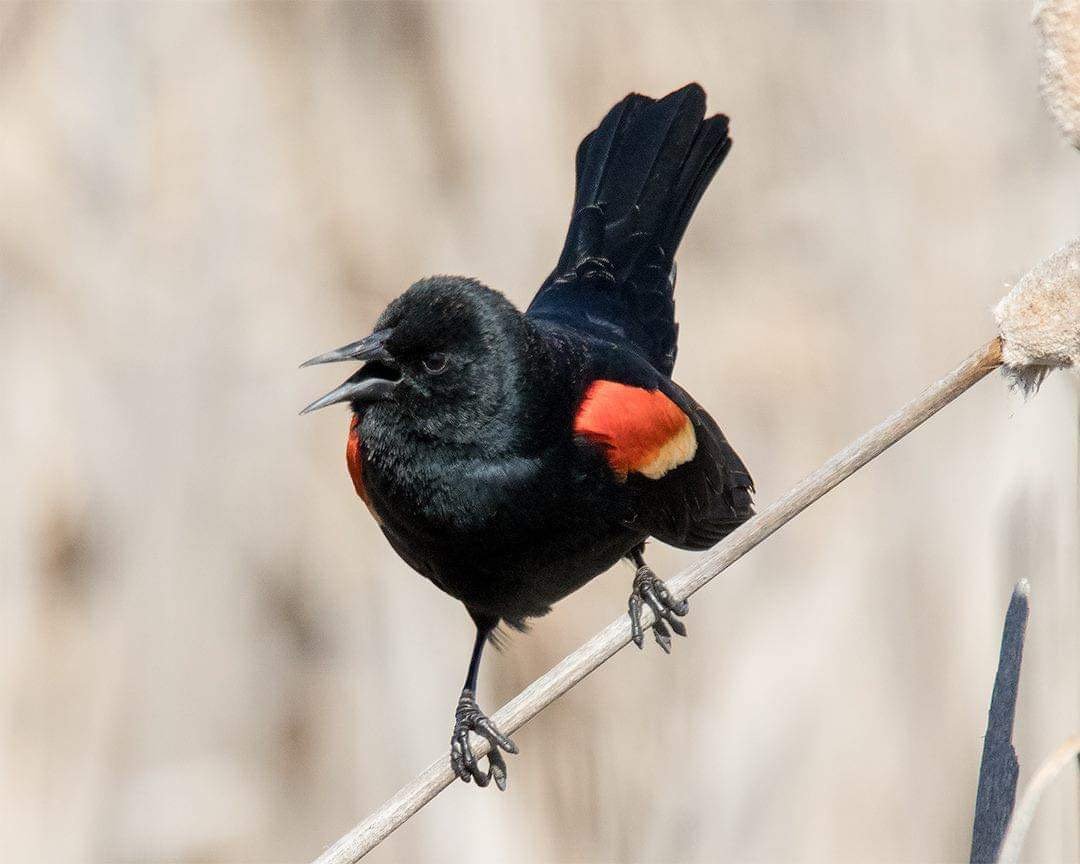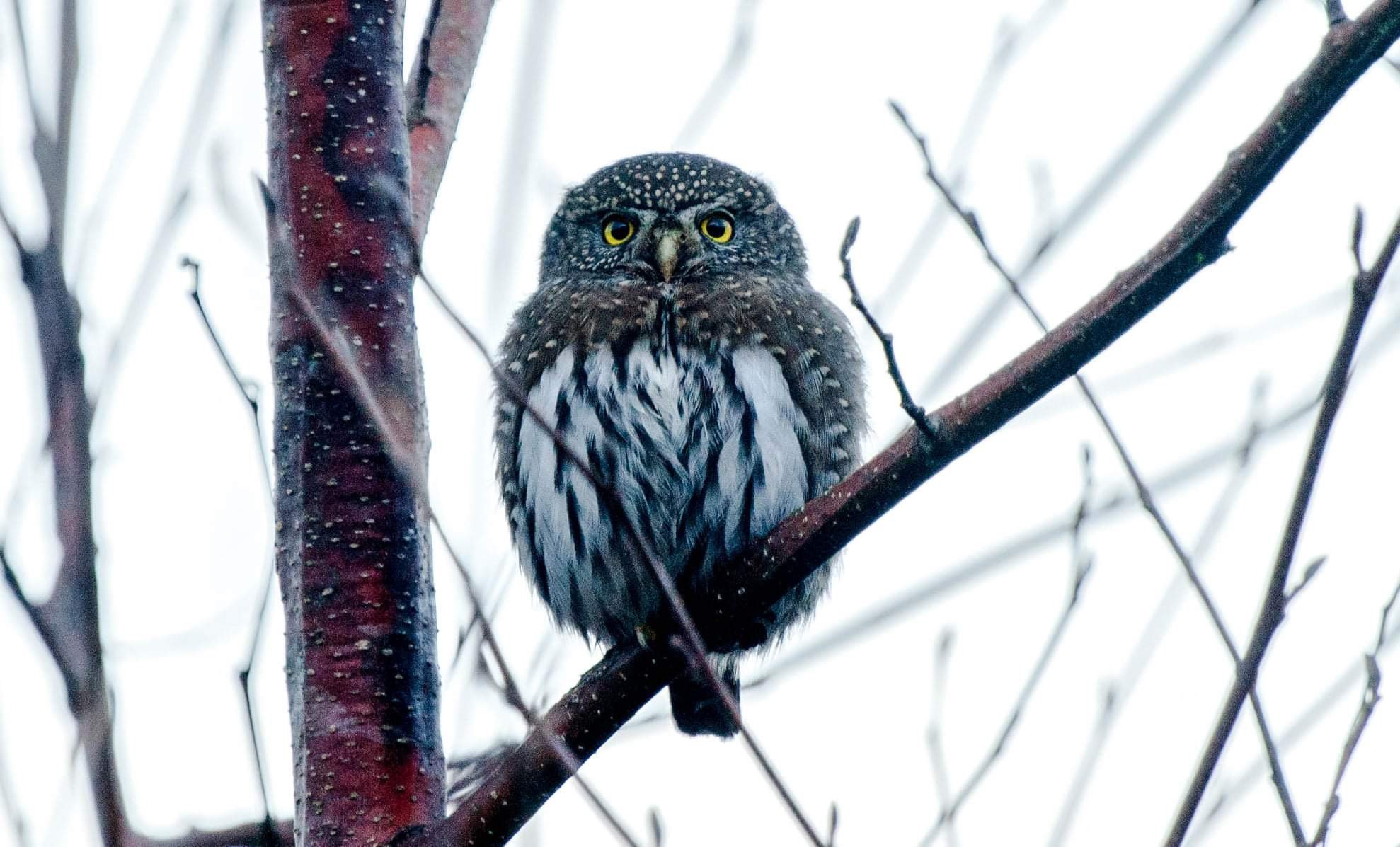Ellensbirds
story by Lily Beck, design and illustrations by Ileana Rea Martinez
Did you know that the number of bird species you can find in Ellensburg is 299? This means that there are 299 different shapes, sizes colors, patterns and wingspans. But no matter the type of bird, each one brings its own special flair to the community.
The surprisingly large number comes from local birder Deborah Essman, who has been birding for the majority of her life. And you did read that right, ‘Birder’ is a term used to describe extreme birdwatchers. “Birders are probably more hard-core than casual birdwatchers,” Essman says. “[They] are very serious about birds, keep detailed lists and love finding rare species.”
So, what makes birds so exciting that people commit their lives to them? Well, not only are they described as cute and intriguing, they also provide environmental impacts to our ecosystems that no other animal can. Oftentimes, birds go unnoticed due to their constant presence, but once you take a moment to take notice, you’ll find that they are everywhere.
On the CWU campus, birds fly by the hustle and bustle of student life all the time. They have no recognition of the stress of making it to class on time, or finishing that paper before the due date. A few of these popular species that can be seen not only on campus but in the rest of Ellenburg are mallard ducks, magpies and California quail.
Bird Blurbs
When it comes to mallard ducks, they can typically be found in or near bodies of water. According to the Cornell Lab of Ornithology, these waterfowl can be identified by males having a dark and iridescent green head, while the females are entirely mottled brown. Both of the sexes also have a blue patch on their wings that shine in the sun. These birds are medium-sized and can be distinguished by their popular quacking noises.
If you are on the hunt for a mallard duck (and not in the traditional hunting sense), some of the places you can find them around town are in the irrigation canals that run through campus, as well as almost any pond or lake. A few examples are Naneum Pond, Mattoon Lake and the Fio Rito Ponds.
Moving away from the water, magpies can be seen all year round. According to the Washington State Fish and Wildlife department (WSFW), you can identify magpies by looking for their unusually long tails and white colors that flash when they fly. Magpies are relatively bold and social birds, so they can be viewed from rather close.
These monochromatic birds can be seen all around town. According to the WSFW, magpies typically stay in open fields where there are trees and thickets accessible. These locations benefit the birds greatly because they tend to feed not only on seeds and nuts, but also other animals. If you’re looking to find one around the ‘Burg, try looking at grocery store parking lots. You are bound to find at least one hopping around.
The California quail is another massively populous bird in Ellensburg. These birds are known to be seen pittering around on the ground and are usually in groups called coveys. These small birds can be distinguished from others due to the males’ thick feathers (known as plumes) sprouting from the tops of their heads. Quail like to inhabit tall brush and thick tangles of trees, but can often be found crossing the roads in town.
The Science of Birds in our Ecosystem
Though birds are fun to observe for birders like Essman, they also play vital roles in our ecosystem. CWU Biology Professor and Director of Environmental Studies, Clay Arango, holds quite a bit of knowledge regarding how birds help the movement and flow of energy between ecosystems.
“A lot of the birds that we see in our area are migratory. They’ll be overwintering somewhere either in the southern hemisphere, or Central America,” Arango says. Since these birds are traveling lengthy journeys, they are able to fly assets into our community that otherwise wouldn’t be here. “They're also bringing the food resources that they've eaten in there,” Arango says. “As they excrete, they're moving nutrients back and forth across ecosystems.”
By doing this, the birds are creating nutrient dynamics within multiple ecosystems. They are helping an abundance of species thrive in their environments by providing this fluctuation of energy. Birds also help the environment by doing the opposite. Instead of providing energy creators, they also take them away. Birds are known to be insect-eaters, so they naturally keep insect populations in control. Without them, we would be seeing takeovers by multiple different types of creepy crawlies.
“One of the projects I had several years ago was studying spruce blood worms, which are a native part of our ecosystem,” Arango says. “When forests grow densely together, it really favors these blood worms. But one of the things that happens is as they start increasing in population, birds will essentially start to notice that.” Arango continues to describe this cycle. “Then, they'll start to feed on them. And as they have greater reproductive success and have more babies, then there's more of those birds to eat those insects across the years.”
One way that this can be seen specifically on the CWU campus is the relationship between owls and small rodents. The main types of rodents we see are mice, rats and voles. These animals tend to cause issues not only on campus, but other places as well by getting into buildings, damaging property and possibly spreading disease.
However, these issues don’t often happen, as CWU’s Ellensburg campus is also home to great horned owls. These birds of prey hunt small rodents at night and keep their population aligned with the rest of the ecosystem. If you ever hear a “hoot hoot” at night, make sure to thank them for all that they do to keep our campus pristine.
How We can Care for our Bird Friends
The benefits that birds bring humans can not be taken for granted and luckily, there are many ways that we can pay them back for all that they do. One of the biggest ways to do this is by protecting what they need to thrive. According to Arango, one of the major things we can do to protect the bird population is to take care of our yards in a bird-friendly way. This means providing both food and shelter to our little friends. “Instead of cutting down all of the shrubs and replacing it with grass, which sort of looks pretty by some people's standards, plant some bushes so that they can nest in those bushes. Or, think about what kind of plants and shrubs grow locally that provide food,” Arango says.
Some local bushes that provide food for both migratory and stationary birds are serviceberry, snowberry and elderberry. These specific bushes provide food throughout much of the year by having ripe berries in the fall and dried berries in the spring. Not only do these plants help birds, but they also provide protection for pollinators like bees.
Along with having an abundance of sustenance, birds need homes too. This means that keeping the bushes and trees in your yard can make the difference between a bird having protection or not. Another great way to keep the population safe is by putting up birdhouses or other places for birds to rest and nest.
How to Bird
Taking care of our feathered friends is rewarding in its own manner, but many want to engage with birds in a more interactive and intimate way. Since Ellensburg is full of birds, many choose to take up birding as a hobby. If this is something you are interested in, there are many resources out there to help get you started. According to Essman, two popular apps for birding are iBird and the Audubon Bird Guide. If you prefer learning about birds in a physical way, there are vast amounts of birding books out there as well as groups here in Kittitas County that go on birding trips. One major community that does so is the Kittitas Environmental Education Network (KEEN). Birders like Essman lead birding trips around the Kittitas Valley through KEEN, teaching and showing community members who their feathered neighbors are.
One big part of birding is being able to see small creatures up close, even if they are far away. When looking at gear, Essman says that the two most important pieces are binoculars and a camera. Though she says that both of these things can cost quite a lot, they improve the experience greatly. She suggests buying the nicest ones that you can afford, and slowly improving the quality as you can.
Why Birds?
Birds are something that can be seen nearly everywhere in the world. No matter where you look, you are bound to find at least one feathery friend looking back at you. Whether you are interested in them from a scientific perspective like Arango, or on a recreational level like Essman, birds are bound to bring you joy in one way or another. So the next time you look out your window and see one, maybe you’ll want to learn more about the little guy.





